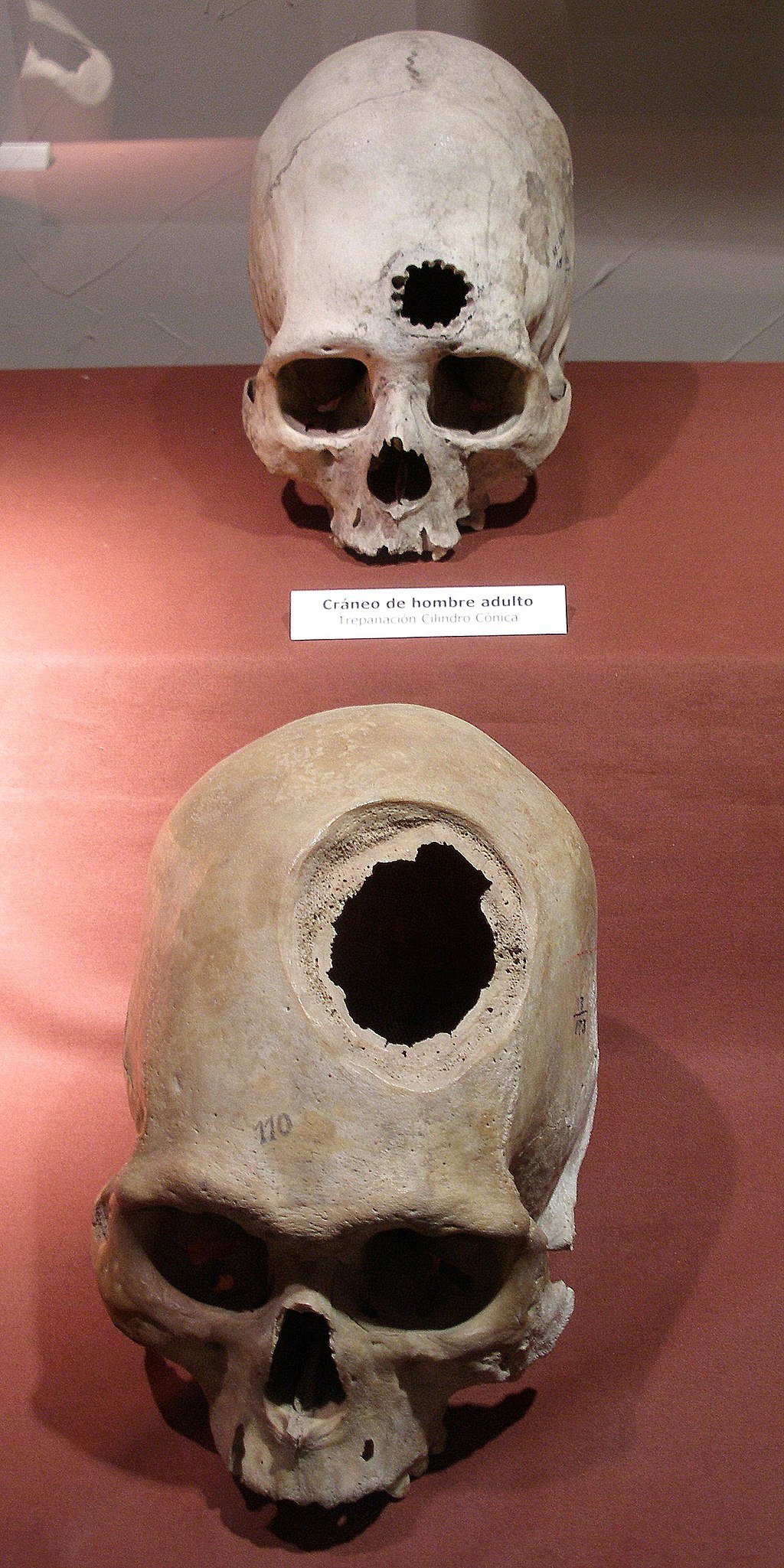The Inca Empire began in 1438 and lasted until 1572 with the final Spanish conquests of Incan strongholds. But what is little known is that the Incans were notable for brain surgery, with very good success rates for the time. Roy Williams explains.
Inca brain surgery. Source: Thomas Quine, available here.
Many understand the Inca to have been a warlike people with advanced technology capable of creating cities like Cuzco and Machu Picchu high in the Andean mountains. However, few have heard of the Incan technological advancement of successful brain surgery. In a time where medical technology in Europe stood decidedly minimal, the Inca had mastered a technique that is estimated to have success rates ranging from 70-90%.
The style of brain surgery regarding the Inca is known as trepanation. The surgery of trepanation requires removing the scalp tissue and boring a hole in the skull of the patient to allow a reduction of swelling and a draining of fluid. This procedure is believed to have been used to reduce brain swelling caused by head injuries as well as to treat mental illness. The Inca version of the surgery of trepanation did not include anesthetic and would have been extremely painful for the patient. Using obsidian blades, physicians would cut away the scalp tissue and scrape the bone of the skull carefully to open the cranial cavity. While this technique has been used in the ancient world by other civilizations, no other civilization has been recorded with success rates like the Inca. Scholars believe that the Inca refined the surgery over many years and ultimately discovered a suitable method of removing the bone of the skull as well sealing the wound in an effective manner. Discoveries regarding the Inca practice of trepanation point to the use of gourd slivers as a means of sealing the wound in a manner that prevented bacterial infection and allowed for healing. The gourd slivers would act as an airtight seal allowing the area to heal properly.
Rate of success
In determining the relative success rate of Inca brain surgery, archaeologists have studied the skulls of individuals with evidence of trepanation procedures. In skulls that displayed bone growth around the outside of the hole where the surgery was performed, we can determine that healing had occurred following the surgery resulting in a successful surgery. In skulls where bone growth around the hole cannot be observed, it can be determined that the patient died, and the surgery was a failure. In the discoveries that have been made so far regarding the Inca practice of trepanation, 70 to 90% of all skulls discovered have shown growth allowing scholars to infer that 70 to 90% of all Inca brain surgeries were a relative success.
When comparing this degree of medical technological advancement with other ancient civilizations, the Inca stand as a technologically advanced civilization. By comparison, the ancient Greeks and Romans also practiced the procedure of trepanation; however archaeological data indicates that the procedure’s success rate hovered around 50%. Regarding the procedure of trepanation, the Greeks and Romans of the ancient world used methods similar to the Incans with methods of either drilling or scraping the bone fragment from the skull to create an opening to the cranial cavity. One significant difference between the Greeks and Romans and the Incans was the use of the gourd sliver, which allowed the wound to heal free from bacterial infection. Whether the Inca understood the nature of bacterial infection and its danger regarding the procedure of trepanation is debatable, but the use of the gourd proved to allow Incan surgeries a higher success rate than their European counterparts. Hippocrates the renowned Greek physician of antiquity and Galen a physician of the Roman empire have been recorded documenting their experiences utilizing trepanation as a treatment for persistent migraines. Regarding the practice and mastery of this procedure, Galen of Rome recommended practicing this procedure on apes before moving towards humans.
In context
When comparing the medical procedures and the technology of the ancient world, Mesoamerican technological achievement is glossed over at best. When comparing civilizations and their respective achievements too much emphasis is placed upon military prowess and societal stamina. While the Inca of Peru and Chile did not last hundreds of years, they still achieved technological advancements that rivaled the Greeks and the Romans. In taking a step back from the current Eurocentric narrative that puts so much emphasis upon European civilizations and their accomplishments, it remains tantamount for historians and scholars to appreciate the legacy of other civilizations throughout the ancient world including those of the Americas.
Now, read Roy’s article on the Armenian Genocide here and the 1980s Guatemalan genocide here.







